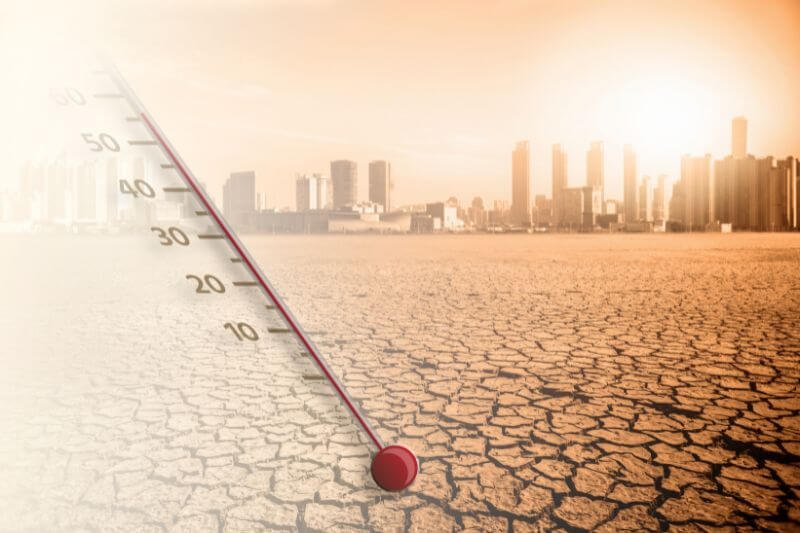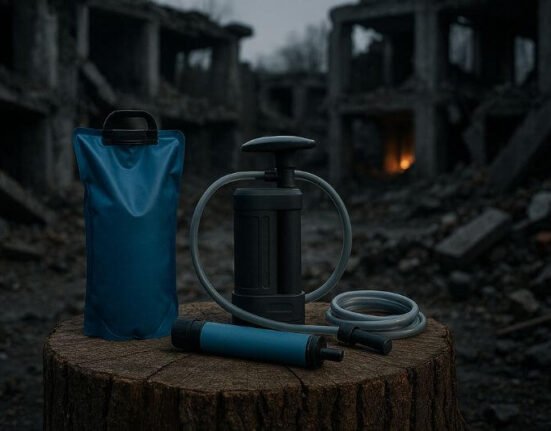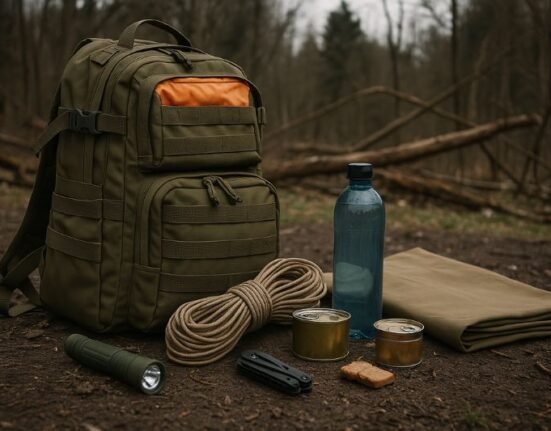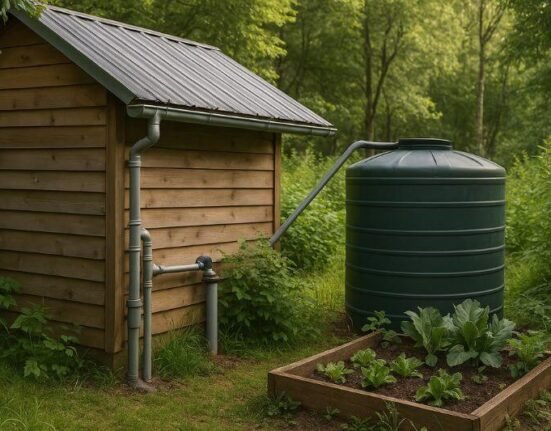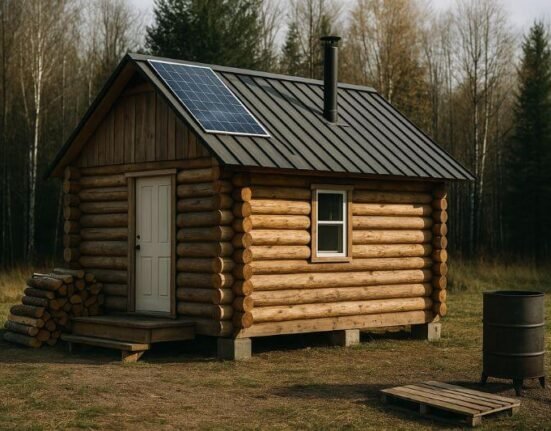The Rising Threat of Prolonged Heatwaves
Surviving a heatwave has become an essential skill in today’s rapidly changing climate. With prolonged heatwaves becoming more common worldwide, from Europe and North America to Asia and Africa, survival preparedness is no longer optional—it’s vital. Yet, despite numerous warnings and available guidance, many individuals and communities continue to make critical mistakes that severely compromise their safety. In this article, we’ll highlight key mistakes you must avoid to ensure your safety while surviving a heatwave and discuss practical strategies for effective heatwave preparedness.
Mistake 1: Underestimating the Severity of a Heatwave
Recognizing Heatwave Risks
A major error people frequently make is underestimating the severity of a heatwave. A prolonged heatwave isn’t simply “hot weather.” It’s an extended period of excessively high temperatures that severely impacts human health, infrastructure, agriculture, and daily life. Heatwaves cause thousands of deaths annually, a figure expected to rise dramatically due to climate change.
How to Avoid this Mistake
Always take official heatwave warnings seriously. Monitor local news, weather apps, and government alerts closely. Acknowledging the potential dangers early and preparing adequately significantly increases your survival chances.
Mistake 2: Inadequate Hydration and Water Management
Why Hydration is Critical in Surviving a Heatwave
Proper hydration is the cornerstone of heatwave preparedness. Dehydration occurs quickly in extreme heat, causing serious health complications such as heat exhaustion and heat stroke.
Practical Hydration Strategies
Store substantial supplies of potable water well in advance. Aim for at least 3-5 liters per person per day. Use electrolyte solutions and avoid alcohol or excessive caffeine, as these accelerate dehydration. Additionally, consider investing in water purification devices to ensure continuous water supply in emergency situations.
Mistake 3: Poor Shelter Preparation
Consequences of Poor Shelter Choices
Another critical mistake is inadequate shelter preparation. During prolonged heatwaves, poorly ventilated or uninsulated homes quickly become dangerously hot, dramatically increasing health risks.
Shelter Optimization Tips
Ensure your shelter is heat-resistant by improving ventilation, adding insulation, and installing reflective window coverings or blackout curtains. Fans and portable air conditioners, combined with backup power sources like solar generators, significantly enhance shelter safety during extreme heat.
Mistake 4: Overlooking Vulnerable Individuals
Identifying High-Risk Groups
Certain individuals—such as the elderly, children, pregnant women, and those with chronic illnesses—are particularly vulnerable during heatwaves. Failing to plan specifically for their needs can have devastating consequences.
How to Protect Vulnerable Individuals
Develop specialized heatwave safety plans for high-risk individuals. Ensure regular check-ins, arrange for cooling options such as fans or air-conditioned spaces, and maintain an adequate supply of necessary medications and healthcare items.
Mistake 5: Neglecting Heatwave Safety Tips for Pets and Livestock
Risks to Animals During Heatwaves
Pets and livestock are highly susceptible to heat stress. Unfortunately, many individuals neglect animal preparedness, leading to avoidable suffering and fatalities.
Protecting Your Animals
Implement robust measures such as providing ample shaded areas, adequate hydration, cooling mats, and regular health monitoring. Modify schedules to avoid physical activity during peak heat periods.
Mistake 6: Ignoring Early Signs of Heat-Related Illnesses
Symptoms of Heat-Related Illnesses
Early symptoms of heat exhaustion and heatstroke include dizziness, excessive sweating, rapid pulse, nausea, confusion, and fainting. Ignoring these signs can quickly lead to life-threatening emergencies.
Immediate Actions to Take
Quickly identify symptoms, move the affected individual to a cooler environment immediately, provide water or electrolyte solutions, and seek emergency medical assistance if symptoms worsen or fail to improve rapidly.
Mistake 7: Lack of Community Cooperation and Emergency Planning
Why Community Cooperation is Crucial
Surviving a prolonged heatwave requires strong community collaboration. Many people neglect this aspect of survival, isolating themselves and significantly reducing their ability to respond effectively during emergencies.
Strengthening Community Preparedness
Build local networks focused on heatwave preparedness. Coordinate resource sharing, establish cooling centers, and organize regular community drills. Effective community cooperation multiplies your resilience in extreme heat events.
Mistake 8: Failure to Prepare Emergency Supplies
Essential Heatwave Emergency Supplies
Many overlook the importance of well-prepared emergency supplies. Essential items include sufficient water, non-perishable food, medication, portable cooling devices, and communication tools.
Emergency Kit Recommendations
Create a detailed heatwave survival kit containing items such as battery-powered fans, solar chargers, hydration packs, first aid kits, and emergency communication devices. Regularly check and update these supplies, ensuring readiness at all times.
Mistake 9: Poor Heat Management Practices at Home
Risks of Incorrect Cooling Methods
Inefficient cooling practices, such as relying solely on air conditioning without backup power or using electric fans incorrectly, can amplify dangers during power outages.
Effective Cooling Strategies
Employ passive cooling techniques like cross-ventilation, reflective window coverings, and utilizing cooler basement spaces. Supplement these methods with reliable backup energy sources, such as portable solar power systems, to maintain essential cooling devices during power disruptions.
Mistake 10: Ignoring Heatwave-Related Economic Impacts
Recognizing Economic Vulnerabilities
Extreme heatwaves significantly impact economic stability—particularly in sectors such as agriculture, transportation, and healthcare. Failing to recognize economic impacts can reduce your ability to secure essential resources.
Financial and Economic Preparedness
Consider financial impacts in your survival strategy. Ensure sufficient financial reserves, maintain updated insurance coverage, and have contingency plans for income disruption. Stockpile critical resources to mitigate temporary shortages during extended heatwave events.
Comprehensive Heatwave Preparedness is Vital
Surviving a heatwave requires comprehensive planning, awareness, and practical action. Avoiding the critical mistakes outlined above dramatically improves your safety and resilience during prolonged periods of extreme heat. Effective hydration, optimized shelter, early symptom identification, animal protection, community collaboration, emergency supply preparedness, efficient home cooling, and economic resilience form the core of effective heatwave survival strategies.
Extreme heatwaves will continue to increase in frequency and severity. By proactively implementing these essential survival strategies, individuals and communities can effectively mitigate heatwave impacts, turning potentially deadly situations into manageable challenges. Now is the time to take decisive action and ensure your safety in the face of escalating heatwave threats.









